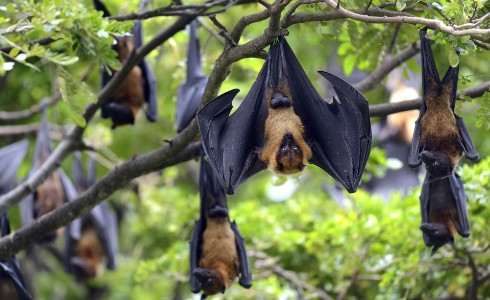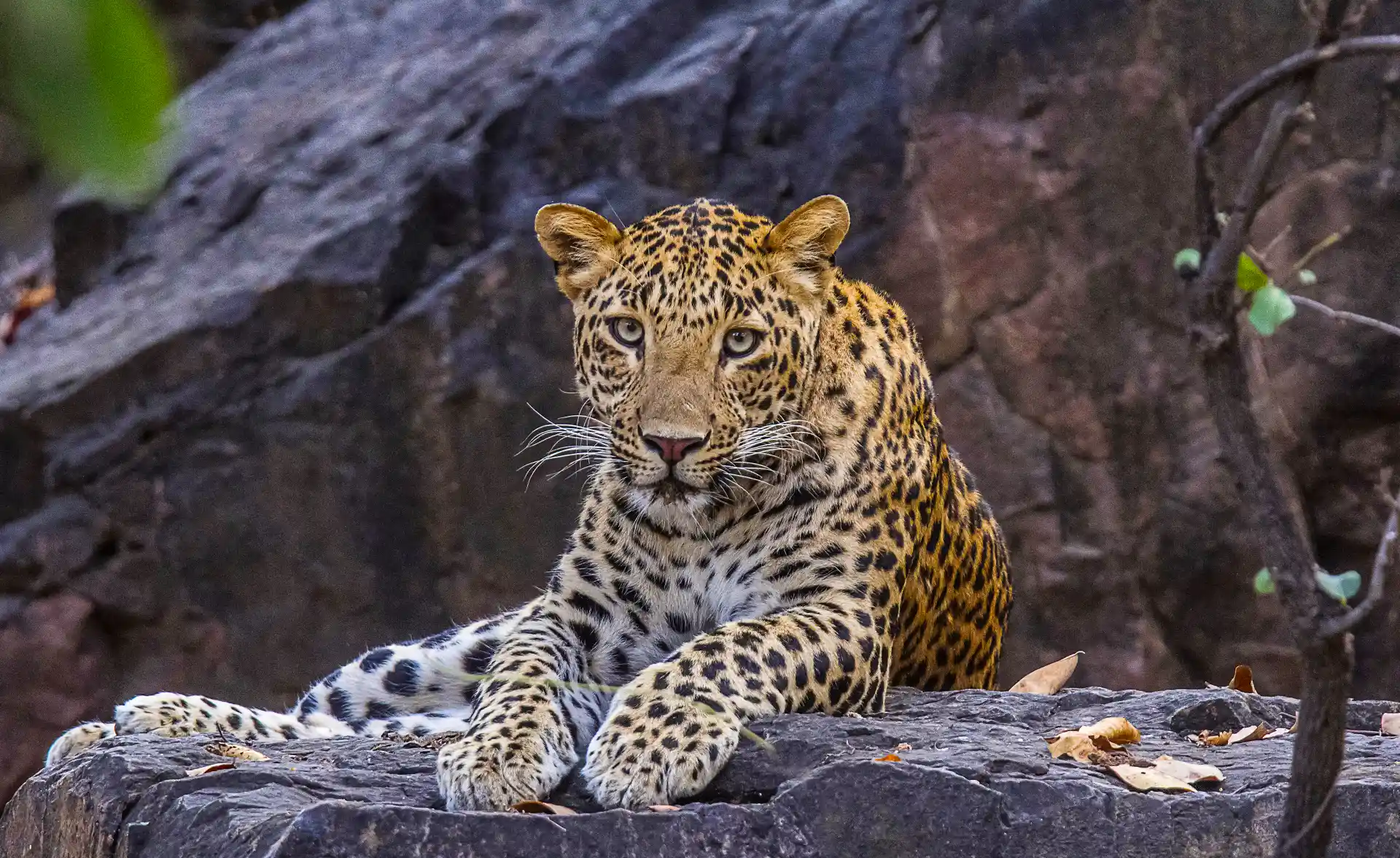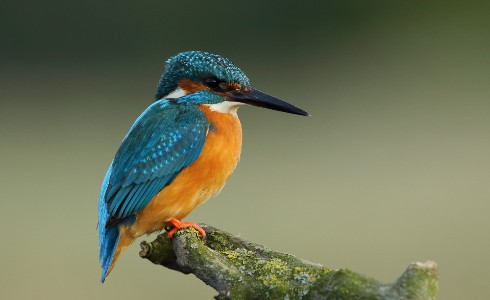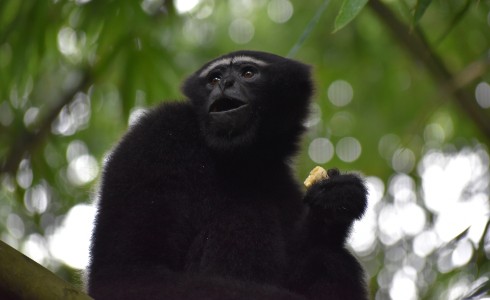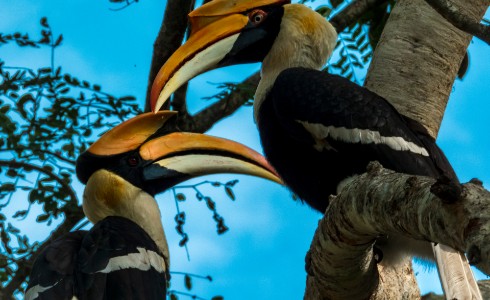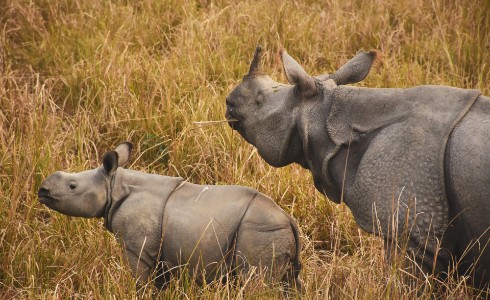May 16, 2022
10 Wildlife Sanctuaries In Assam That Will Bring You Close To Nature
CM Content Team
Encountering wildlife in its natural habitat is a memorable experience for travelers, and Assam offers just that. Situated in a top biodiversity hotspot, Assam's landscape, enriched by the Himalayan foothills and the Brahmaputra River, has several wildlife sanctuaries and attracts a lot of wildlife enthusiasts from around the globe.
Assam's diverse wildlife comprises various landforms, vegetation, birds, and animals. Its favorable climate supports endemic species like the Pygmy hog, found exclusively in Assam. Rare wildlife such as wild water buffalos, hoolock gibbons, hog deer, great one-horned rhinoceroses, and Ganges dolphins also call Assam home.
Here are some must-visit wildlife sanctuaries in Assam for your travel list:
Situated on the banks of the Brahmaputra River, Kaziranga is a wildlife sanctuary in Golaghat, Karbi Anglong and Nagaon districts of Assam that is immensely popular. A UNESCO World Heritage Site, Kaziranga National Park has been attracting thousands of tourists for many years now. The 800 sq. mt. area of the national park is full of thickets, beautiful rocky landscapes, and green vegetation. Amidst the greenery, you can spot a variety of birds and wild animals like elephants, tigers, and water buffaloes. However, the main attraction of the national park is the one-horned rhinoceros. You can explore the national park in a jeep with your loved ones, and if you’re lucky, you will be able to see some of the wild animals a few centimetres away from you.
How to reach:
|
Mode of Transport |
Description |
|---|---|
|
By Air |
Nearest airport: Guwahati Airport (217 km away). From Guwahati, take a taxi/bus to Kaziranga. |
|
By Train |
Nearest railway station: Furkating Railway Station (75 km away). Take a taxi/bus to Kaziranga. Alternatively, take a train to Guwahati Railway Station and proceed by road. |
|
By Road |
Kaziranga is well-connected by road to major cities in Assam. Drive or take a bus from Guwahati, Tezpur, or Jorhat. |
Best time to visit:
|
Best Time to Visit |
Description |
|---|---|
|
November to February |
Peak season. Pleasant weather, minimal rainfall. Ideal for wildlife viewing and safaris. |
|
March and April |
Onset of spring. Warmer temperatures, lush vegetation. Good for wildlife and birdwatching. |
|
May to October |
Park closed due to monsoon season. Heavy rainfall leads to flooding. Not suitable for visitation. |
Things to do:
Located in the Kokrajhar and Dhubri districts, Chakrashila is a gorgeous wildlife sanctuary in Assam, home to some of the most exotic wild animals. It is spread over 45.568 sq. km with two lakes, Dheer Beel and Diplai Beel, on each side. There are over 20 species of reptiles and 40 species of butterflies in this sanctuary. Some of the mammals spotted at Chakrashila include the Indian flying fox, Rhesus Macaque, Bengal Fox, Asiatic Jackal, Hornbill, and Indian Pipistrelle. This sanctuary in Assam also houses the glorious and endangered golden langurs and over 250 species of birds which will simply take your breath away!
How to reach:
|
Mode of Transport |
Description |
|---|---|
|
By Air |
Nearest airport: Lokpriya Gopinath Bordoloi International Airport in Guwahati (about 200 km away). From Guwahati, hire a taxi or take a bus to reach Chakrashila Wildlife Sanctuary. |
|
By Train |
Nearest railway station: Kokrajhar Railway Station (about 40 km away). From Kokrajhar, hire a taxi or take a bus to reach Chakrashila Wildlife Sanctuary. |
|
By Road |
Chakrashila Wildlife Sanctuary is well-connected by road. You can drive or take a bus from nearby towns like Kokrajhar or Bongaigaon. |
Best time to visit:
|
Best Time to Visit |
Description |
|---|---|
|
November to February |
Peak season. Pleasant weather, minimal rainfall. Ideal for wildlife spotting and exploration. |
|
March and April |
Spring season. Warmer temperatures, lush vegetation. Good for birdwatching and nature walks. |
|
May to October |
Park closed due to monsoon season. Heavy rainfall may lead to flooding. Not suitable for visitation. |
Things to do:
Situated on the foothills of the Himalayas with the beautiful country of Bhutan on its north, in the Udalgiri and Baksha district of Assam, Bornadi Wildlife Sanctuary is where some of the most ferocious wildlife in Assam reside. Named after the river Bornadi which flows from its border, the natural beauty of this wildlife sanctuary is hard to describe in words. Some highly endangered species like the Clouded Leopard, Golden Langur, and Pygmy Hogs reside in this wildlife sanctuary in Assam. Other wildlife species spotted here include Hispid Hare, White Winged Wood Duck, and Swamp Deer.
How to reach:
|
Mode of Transport |
Description |
|---|---|
|
By Air |
Nearest airport: Lokpriya Gopinath Bordoloi International Airport in Guwahati (about 220 km away). From Guwahati, hire a taxi or take a bus to reach Bornadi Wildlife Sanctuary. |
|
By Train |
Nearest railway station: Kokrajhar Railway Station (about 40 km away). From Kokrajhar, hire a taxi or take a bus to reach Bornadi Wildlife Sanctuary. |
|
By Road |
Bornadi Wildlife Sanctuary is well-connected by road. You can drive or take a bus from nearby towns like Kokrajhar or Bongaigaon. |
Best time to visit:
|
Best Time to Visit |
Description |
|---|---|
|
November to February |
Peak season. Pleasant weather, minimal rainfall. Ideal for wildlife spotting and exploration. |
|
March and April |
Spring season. Warmer temperatures, lush vegetation. Good for birdwatching and nature walks. |
|
May to October |
Park closed due to monsoon season. Heavy rainfall may lead to flooding. Not suitable for visitation. |
Things to do:
Situated in the civil district of Jorhat in Assam, Hoollongapar Gibbons Sanctuary is surrounded by lush grasslands and tea plantations that make it a picturesque location perfect for some wildlife photography. Not only is this sanctuary home to India’s one and only ape species–the Hoolock Gibbon, but also the Bengal Slow Loris. This sanctuary in Assam is a dream come true for wildlife enthusiasts as it also houses tigers, leopards, wild boars, and around 220 species of avifauna.
How to reach:
|
Mode of Transport |
Description |
|---|---|
|
By Air |
Nearest airport: Lokpriya Gopinath Bordoloi International Airport in Guwahati (about 200 km away). From Guwahati, hire a taxi or take a bus to reach Hoollongapar Gibbons Sanctuary. |
|
By Train |
Nearest railway station: Jorhat Railway Station (about 20 km away). From Jorhat, hire a taxi or take a bus to reach Hoollongapar Gibbons Sanctuary. |
|
By Road |
Hoollongapar Gibbons Sanctuary is well-connected by road. You can drive or take a bus from nearby towns like Jorhat or Guwahati. |
Best time to visit:
|
Best Time to Visit |
Description |
|---|---|
|
November to February |
Peak season. Pleasant weather, minimal rainfall. Ideal for wildlife spotting and exploration. |
|
March and April |
Spring season. Warmer temperatures, lush vegetation. Good for birdwatching and nature walks. |
|
May to October |
Park closed due to monsoon season. Heavy rainfall may lead to flooding. Not suitable for visitation. |
Things to do:
Located on the south banks of the Brahmaputra river in the Nagaon district, Laokhowa Wildlife Sanctuary is a part of the Laokhowa-Burachapori ecosystem. The sanctuary offers an ideal habitat for Asiatic water buffaloes. Over 200 species of birds have been spotted at this picturesque sanctuary with some of the most exotic wildlife in Assam like the Indian leopard, Indian boar, Bengal tiger, leopard cat, and hog deer. If you’re looking to get a closer look at some of the most exotic wildlife animals you can find in India, then spend a day at this sanctuary.
How to reach:
|
Mode of Transport |
Description |
|---|---|
|
By Air |
Nearest airport: Lokpriya Gopinath Bordoloi International Airport in Guwahati (about 170 km away). From Guwahati, hire a taxi or take a bus to reach Laokhowa Wildlife Sanctuary. |
|
By Train |
Nearest railway station: Nagaon Railway Station (about 30 km away). From Nagaon, hire a taxi or take a bus to reach Laokhowa Wildlife Sanctuary. |
|
By Road |
Laokhowa Wildlife Sanctuary is well-connected by road. You can drive or take a bus from nearby towns like Nagaon or Guwahati. |
Best time to visit:
|
Best Time to Visit |
Description |
|---|---|
|
November to February |
Peak season. Pleasant weather, minimal rainfall. Ideal for wildlife spotting and exploration. |
|
March and April |
Spring season. Warmer temperatures, lush vegetation. Good for birdwatching and nature walks. |
|
May to October |
Park closed due to monsoon season. Heavy rainfall may lead to flooding. Not suitable for visitation. |
Things to do:
Surrounded with sparkling water and lush greens, this Deepor Beel Bird sanctuary is located in the Kamrup District of Guwahati, Assam. Recognised as one of the finest wildlife sanctuary in India, this beautiful sanctuary is a home to 120 species of birds and a must visit for Bird watching. Some of the species that can be spotted here are the kingfishers, fishing eagles, stork and wide variety of ducks. If you are planning to have a real closer view of these birds at their natural habitat, do plan a visit at this sanctuary and plan your stay at the nearest club Mahindra partner hotels.
Assam is a great place to spend some time with your loved ones amidst the glory of nature and see some of the most exotic wildlife species up close. It truly is a little piece of paradise on Earth!
How to reach:
|
Mode of Transport |
Description |
|---|---|
|
By Air |
Nearest airport: Lokpriya Gopinath Bordoloi International Airport in Guwahati (about 16 km away). From Guwahati, hire a taxi or take a bus to reach Deepor Beel Bird Sanctuary. |
|
By Train |
Nearest railway station: Guwahati Railway Station (about 10 km away). From Guwahati, hire a taxi or take a bus to reach Deepor Beel Bird Sanctuary. |
|
By Road |
Deepor Beel Bird Sanctuary is well-connected by road. You can drive or take a bus from nearby areas in Guwahati. |
Best time to visit:
|
Best Time to Visit |
Description |
|---|---|
|
November to February |
Peak season. Pleasant weather, minimal rainfall. Ideal for birdwatching and wildlife spotting. |
|
March and April |
Spring season. Warmer temperatures, lush vegetation. Good for birdwatching and nature walks. |
|
May to October |
Park closed due to monsoon season. Heavy rainfall may lead to flooding. Not suitable for visitation. |
Things to do:
Bura-Chapori Wildlife Sanctuary, situated in the Sonitpur district of Assam, is a lesser-known gem among the wildlife sanctuaries in Assam. While not as famous as Kaziranga Wildlife Sanctuary, it contributes significantly to the rich biodiversity of Assam. Spanning approximately 44 square kilometers, this sanctuary is nestled amidst the lush landscapes of Assam, complementing the larger national parks in the region. The sanctuary is renowned for its diverse flora and fauna, adding to the rich wildlife of Assam. It hosts a variety of wildlife species, including elephants, Indian bison, deer, wild boars, and an array of avian species such as hornbills, eagles, and waterfowl. Additionally, it serves as a vital habitat for the endangered Bengal florican, highlighting its significance in wildlife conservation efforts in Assam.
How to reach:
|
Mode of Transport |
Description |
|---|---|
|
By Air |
Nearest airport: Lokpriya Gopinath Bordoloi International Airport in Guwahati (about 180 km away). From Guwahati, hire a taxi or take a bus to reach Bura-Chapori Wildlife Sanctuary. |
|
By Train |
Nearest railway station: Rangapara North Railway Station (about 30 km away). From Rangapara, hire a taxi or take a bus to reach Bura-Chapori Wildlife Sanctuary. |
|
By Road |
Bura-Chapori Wildlife Sanctuary is well-connected by road. You can drive or take a bus from nearby towns like Tezpur or Guwahati. |
Best time to visit:
|
Best Time to Visit |
Description |
|---|---|
|
November to February |
Peak season. Pleasant weather, minimal rainfall. Ideal for wildlife spotting and exploration. |
|
March and April |
Spring season. Warmer temperatures, lush vegetation. Good for birdwatching and nature walks. |
|
May to October |
Park closed due to monsoon season. Heavy rainfall may lead to flooding. Not suitable for visitation. |
Things to do:
Garampani Wildlife Sanctuary
Garampani Wildlife Sanctuary, situated in the Karbi Anglong district of Assam, India, is renowned for its natural beauty and diverse flora and fauna. Covering an area of approximately 6.05 square kilometers, this sanctuary is nestled amidst the lush greenery of the Eastern Himalayas.
The sanctuary is named after the hot water springs (Garampani) that are found within its boundaries. These natural springs are believed to have medicinal properties and attract visitors seeking therapeutic baths. Garampani Wildlife Sanctuary is home to a variety of wildlife species, including the endangered hoolock gibbons, leopards, deer, wild boars, and various bird species.
How to reach:
|
Mode of Transport |
Description |
|---|---|
|
By Air |
The nearest airport is Lokpriya Gopinath Bordoloi International Airport in Guwahati, approximately 220 kilometers away. From Guwahati, hire a taxi or take a bus to reach Garampani Wildlife Sanctuary. |
|
By Train |
The nearest railway station is Furkating Junction, located around 70 kilometers away. From Furkating Junction, hire a taxi or take a bus to reach Garampani Wildlife Sanctuary. |
|
By Road |
Garampani Wildlife Sanctuary is well-connected by road. You can drive or take a bus from nearby towns like Golaghat or Kaziranga National Park. |
Best time to visit:
|
Best Time to Visit |
Description |
|---|---|
|
November to February |
Peak season. Pleasant weather, minimal rainfall. Ideal for wildlife spotting and exploration. |
|
March and April |
Spring season. Warmer temperatures, lush vegetation. Good for birdwatching and nature walks. |
|
May to October |
Park closed due to monsoon season. Heavy rainfall may lead to flooding. Not suitable for visitation. |
Things to do:
Sonai Rupai Wildlife Sanctuary, situated in the Sonitpur district of Assam, India, is a biodiverse haven renowned for its rich flora and fauna. Spanning an area of approximately 220 square kilometers, this sanctuary is nestled amidst the picturesque landscapes of the Eastern Himalayas.
The sanctuary is named after the Sonai and Rupai rivers that flow through its territory, adding to its natural beauty. It comprises diverse habitats including grasslands, wetlands, deciduous forests, and riverine ecosystems, making it a haven for a wide variety of wildlife species.
How to reach:
|
Mode of Transport |
Description |
|---|---|
|
By Air |
The nearest airport is Lokpriya Gopinath Bordoloi International Airport in Guwahati, approximately 250 kilometers away. From Guwahati, hire a taxi or take a bus to reach Sonai Rupai Wildlife Sanctuary. |
|
By Train |
The nearest railway station is Tezpur Railway Station, located around 45 kilometers away. From Tezpur, hire a taxi or take a bus to reach Sonai Rupai Wildlife Sanctuary. |
|
By Road |
Sonai Rupai Wildlife Sanctuary is well-connected by road. You can drive or take a bus from nearby towns like Tezpur or Guwahati. |
Best Time to Visit:
|
Best Time to Visit |
Description |
|---|---|
|
November to February |
Peak season. Pleasant weather, minimal rainfall. Ideal for wildlife spotting and exploration. |
|
March and April |
Spring season. Warmer temperatures, lush vegetation. Good for birdwatching and nature walks. |
|
May to October |
Park closed due to monsoon season. Heavy rainfall may lead to flooding. Not suitable for visitation. |
Things to do:
Nambor Wildlife Sanctuary, located in the Karbi Anglong district of Assam, India, is a biodiverse haven encompassing an area of approximately 37 square kilometers. Nestled amidst the lush greenery of the Eastern Himalayas, this sanctuary is renowned for its rich flora and fauna.
The sanctuary is characterized by dense forests, grasslands, and wetlands, providing diverse habitats for a wide variety of wildlife species. It serves as an important corridor for the movement of elephants between the hills and the plains. Nambor Wildlife Sanctuary is home to numerous mammal species including elephants, tigers, leopards, wild boars, and various species of deer. It is also a paradise for birdwatchers, with over 200 avian species recorded in the sanctuary.
How to reach:
|
Mode of Transport |
Description |
|---|---|
|
By Air |
The nearest airport is Lokpriya Gopinath Bordoloi International Airport in Guwahati, approximately 200 kilometers away. From Guwahati, hire a taxi or take a bus to reach Nambor Wildlife Sanctuary. |
|
By Train |
The nearest railway station is Lumding Junction, located around 150 kilometers away. From Lumding, hire a taxi or take a bus to reach Nambor Wildlife Sanctuary. |
|
By Road |
Nambor Wildlife Sanctuary is well-connected by road. You can drive or take a bus from nearby towns like Diphu or Guwahati. |
Things to do:
Assam's wildlife sanctuaries and national parks offer rich biodiversity and unforgettable experiences year-round. While the monsoon season sees heavy rainfall, other times of the year are perfect for a vacation. Assam is home to renowned destinations like Kaziranga Wildlife Sanctuary, known for its one-horned rhinoceroses, and Manas National Park, where majestic elephants roam. Birdwatchers will also be delighted by the abundance of species in Assam's lush landscapes. Whether you're a wildlife enthusiast or seeking a memorable vacation, Assam's natural beauty and diverse wildlife make it an ideal destination for exploration.
Mahindra Holidays & Resorts India Ltd. (MHRIL), a part of Leisure and Hospitality sector of the Mahindra Group, offers quality family holidays primarily through vacation ownership memberships and brings to the industry values such as reliability, trust and customer satisfaction. Started in 1996, the company's flagship brand ‘Club Mahindra’, today has over 290,000 members , who can holiday at 140+ resorts in India and abroad.
